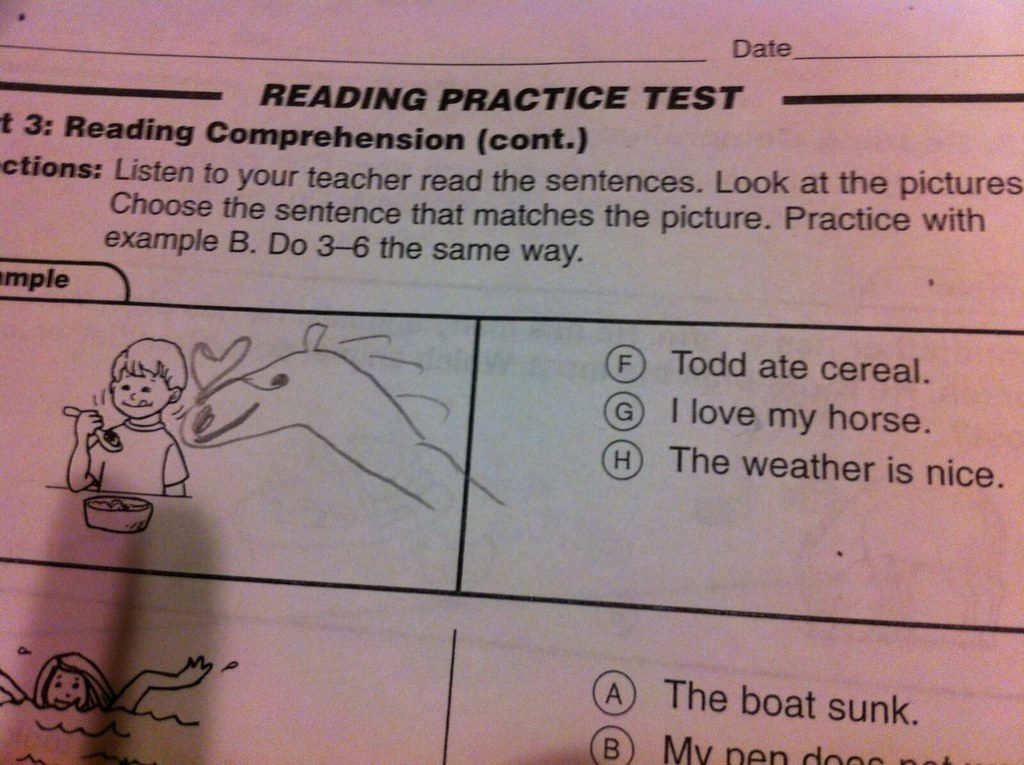Another Private Sector-Public Education Partnership Raises Eyebrows

Ohio has a new coalition of business leaders “committed to improving education for every Ohio student,” but is the commitment really to quality education or to creating an optimal employee for local business?
Multiple prominent business leaders and media outlets were quick to praise the March launch of the Ohio Excels coalition – an organization that seeks to prepare public school students in the state for the changing demands of the modern workplace.
However, a closer look at the program raises concern that the programs and policies Ohio Excels is implementing are actually a way for corporations funding the program to ensure they will have a pool of workers fully conditioned to fit the needs of their companies right out of school. That kind of business-needs-focused education could be coming at the expense of a more well-rounded education that develops skills like critical thinking.
What is Ohio Excels?

Screenshot of Ohio Excels’ website homepage.
The majority of the concerns expressed about Ohio Excels stem from the fact that most of its board members are affiliated with large corporations or organizations that emphasize free-market economic growth. People are worried the influence of such individuals and groups on education policies could put economic concerns before academic and personal development interests.
The board members of Ohio Excels include Mary Beth Martin from Cincinnati, who is the executive director of the Farmer Family Foundation and Gary Z. Lindgren, who is the president of the Cincinnati Business Committee, and members of the Ohio Business Roundtable and other market-centered business associates and advocates around the state.
The president of Ohio Excels is Lisa Gray, who used to run a public policy consulting firm and has close ties with the Bill and Melinda Gates Foundation. She has also held various positions at the Greater Columbus Chamber of Commerce and worked as the Deputy Executive Assistant under former Republican Mayor Greg Latushka.
As Gray told the Cincinnati Enquirer, “By 2025, 65% of Ohioans will need some type of post-secondary degree or training to succeed at work.” Gray claims that currently only 44% of Ohioans have these qualifications.
Gray is right that Ohio’s state government has good reason to be concerned about workforce development and educating a student body to be prepared for the job market. Ohio is a former economic powerhouse due to widely available manufacturing and agriculture jobs, but fell behind in recent years as job opportunities left the region. Now, Ohio has to come to terms with the fact it must fix a broken education system to produce students equipped to find jobs and succeed in different economic sectors.
What do Ohio Teachers Say?

North High School in Columbus, Ohio is listed on the National Register of Historic Places. (Photo: Wdzinc)
Rob Soccorsi, a high school social studies teacher from Columbus, Ohio, believes an education focused on content-based knowledge and understanding is the best way to prepare students for whichever professional direction they want to pursue.
Soccorsi says, “If schools emphasize a rigorous, content-rich curriculum, provide support and hold all students accountable, then the skills and workforce preparation will be a natural result, with the added benefit of students gaining broad knowledge to meaningfully and intelligently participate in a democratic form of government.”
Students shouldn’t be taught to obey and conform, they should be provided with proven, factual information and then given the tools to process this information in their own way, Soccorsi believes.
Is Ohio Excels a Pipeline for Big Business?
That being said, Gray and the other members of Ohio Excels might not be approaching education issues in the best way. The reason Ohio was so economically productive in the past was because of the hardworking individuals who worked in steel mills and rubber factories while their rural peers produced thousands of tons of corn and other agricultural products to feed the United States.
America has a tremendous economic capability in terms of producing products, but politicians and big business now favor importing goods from nations that can produce goods at a fraction of the cost that American factories could.
The push toward preparing students for the business world can be undoubtedly beneficial, but it could also appear that what Ohio Excels is perhaps more interested in is creating a “pipeline” from Ohio public schools to large corporations. And Ohio Excels could be filling that pipeline with students who may lack the ability to think critically and question the world around them but have a vast understanding of the tools big business use to succeed.
Many corporate interests that control the American economy don’t want the next generation of American youth to think critically and question authority or challenge company policy, they want obedience and profit maximization. Ohio Excels seems more than ready to provide these corporations with those characteristics.
In fact, in a comment to the Cincinnati Enquirer Gray hinted at such a pipeline.
“What we are really interested in is (sustaining) the education pipeline. How do we prepare students for success in life?” Gray asked. “When you look at the fact that we have people seeking employment who can’t find it, businesses who have open positions and know that there is a mismatch in training, how can you ensure more kids are better prepared with the knowledge and skills they need?”
The motto on Ohio Excels website also hints at the hyper-focus on business needs: “Every Student, Every Day, Everybody’s Business.”
Soccorsi explains the potential problems with a workforce based approach to education:
“While we want students to have the knowledge and skills to succeed in business, I find that often this desire leads them to an approach that emphasizes teaching 21st century skills or work skills such as critical thinking, problem-solving, innovation and collaboration without an appreciation that these skills are dependent on vast breadth and depth of subject-specific content knowledge. The knowledge piece is typically unintentionally minimized by the corporate community and, frankly, even by organizations that advocate for students and teachers as well as many universities that train teachers.”
Also according to the group’s website, the mission of Ohio Excels is “To provide an informed business perspective to help improve and transform Ohio’s education system so that it better prepares students to meet the demands of our evolving economy.”
But does meeting the demands of the “evolving economy” really just mean producing students tailor-made to fit the demands of big business and large corporations? One has to wonder, especially with the inclusion of jargon like “informed business perspective.” For Ohio Excels to truly help Ohio’s public school students and prepare them for work in the modern world, it must not only teach them the skills to be good employees but also the knowledge to be good citizens.
Ohio Excels is also linked to Jobs for the Future, an organization that counts Walmart and Google among its partners. Jobs for the Future is also known for its support of the Common Core Standards policy initiative, a controversial program that has garnered criticism for limiting educational freedom and its similarities to the essentially failed No Child Left Behind experiment.
Where Does Standardized Testing Fit In?

Elementary school standardized test question. (Photo: Tom Woodward)
Many individuals take issue with standardized tests and the way in which they force teachers to teach to a rigid curriculum at the expense of academic freedom. But Soccorsi believes standardized tests are important. He emphasized a rigorous, content-rich curriculum does not mean an abandonment of standards and criteria that a student must meet to graduate from Ohio’s public school system, but in fact, quite the contrary.
According to Soccorsi, “Standardized tests matter. They’re not the be all end all of an educated person, but they serve important purposes. They’re a quantifiable, objective and reliable way to measure and compare student achievement both within a school and among schools.”
There needs to be some way to provide cohesive standards of accountability to state schools, and as of now, standardized tests seem to be the best option. According to Soccorsi, standardized tests “provide an incentive for some teachers to teach the standards that are part of their curriculum. Similarly, they provide incentive for students to master the content that they’re expected to learn.”
However, standardized tests and the metrics they create do not come without problems and additional baggage. Teaching lessons based on weakly established curricula at the expense of their students’ education constrains teachers.
Soccorsi says that he’s “both empathetic and sympathetic to the many teachers who are stuck teaching courses with weak or vague content standards who then have to prepare students for tests based on soft skills that are somewhat unteachable. In those cases, the standards should be fixed instead of eliminating the tests.”
Changing Graduation Requirements in Ohio
Ohio has struggled to find the best way to set graduation requirements that are possible for students to achieve and also ensure that students are ready to join the workforce.
Critics of the original Ohio Graduation Test (OGT), introduced in 2006, maintained the test wasn’t difficult enough and therefore didn’t do a good job of testing whether students were ready to attend university or enter the job market.
Revisions of the test also proved problematic since some school districts had fewer than half of their students score enough points to pass later versions of the test. Legislation remedied this and provided students with alternative routes to graduation if they didn’t pass the test.
The state has been forced to try many different options to find an appropriate way to designate graduation requirements, and the standards have evolved from one test to a series of seven tests to an option that allows students to complete a “culminating student experience project” instead of having their right to graduate qualified by standardized tests.
Ohio Excels and its members have been very vocal in their opposition to the culminating student experience project. In fact, Ohio Excels board member and former congressman Pat Tiberi called the option an example of “the soft bigotry of low expectations.”
An Ohio high school teacher who prefers to remain unnamed and is not associated with Ohio Excels mentioned that many of the alternative options “demonstrate little to no understanding of learning academic content.”
Lisa Gray, the president of Ohio Excels, is also worried about the culminating student experience project, claiming that she is worried it is going to be an option for students that is “inconsistent across the state, that there will be different expectations depending on the community that you live.”
Many members of the state school board who supported the culminating student experience project option opposed Gray’s comments. The basis of these arguments in support of the experience test was multi-faceted and touched upon several issues that are incredibly important to the education debate and how educational success is measured.
School board member John Hagan points out that many students that are incredibly intelligent have trouble taking standardized tests that do not adequately measure their skill level. His colleague Meryl Johnson pointed out it is unfair to have a one-size-fits-all approach when the financial means of public schools in different districts vary drastically.
Even if the new graduation requirements created some inconsistencies across school districts throughout the state, would it be that problematic?
Suburban high school students are expected to graduate high school, and these areas have systems in place to ensure their graduation rates are fairly high, but often students in impoverished, inner-city school districts do not have the same support systems.
If affluent, upper-class school districts can ensure that the majority of their students graduate, shouldn’t students in less privileged schools have the same opportunity? A high school diploma is the first step toward being able to access higher education and all the career opportunities that follow, should this option be available to students from all school districts, even if it means less rigid state requirements?
Legislators have continually been forced to postpone the application of new state requirements after realizing that under new, stricter requirements many students would not graduate. Is the state of Ohio lowering the standards required to graduate high school in order to ensure that graduation rates don’t plummet?
Some educators think so. An Ohio high school teacher who prefers to remain unnamed stated:
“I’ve taught one of the tested courses for multiple years to students of wide-ranging abilities and disabilities, and I don’t find the test to be unreasonable for any student expecting to earn a diploma.
“It’s a bad idea to throw out the tests because it’s important to have objective, standardized and reliable measures to ensure that all students in Ohio are held to a minimal standard of learning across various disciplines.
“I realize that many students are failing to reach the bar that was set, but these tests are not unreasonable in difficulty, and students are even able to score below proficient on some of them and still earn the minimal number of points necessary to graduate.
“I think that watering down the graduation requirements by offering pathways that don’t require reasonable rigor is a mistake. The focus should be on maintaining high standards, while providing supports for students to learn the material instead of exempting them from the tests.”
Focus on STEM

DAYTON, Ohio — Students participating in Home School STEM Day on Oct. 2, 2017, at the National Museum of the U.S. Air Force. Students enjoyed the guided tours, scavenger hunts, hands-on classes and aerospace demonstration stations. (U.S. Air Force photo)
One of the major initiatives that Ohio Excels and other education-centered policy research groups focus on is a concentration on STEM (Science, Technology, Engineering and Mathematics) fields and development in these disciplines. These fields are considered to be at the forefront of cutting edge business practice and implementation, but one has to wonder if modern education’s trend toward developing these fields of study is coming at the expense of knowledge in liberal arts-based studies.
There is no doubt that understanding science and technology concepts will be essential for humans to succeed and adapt to the future. But if this progress is realized without a basis of the concepts expressed in fields such as social sciences, language arts and philosophy, then it is almost certain this progress will lead to an inability to think critically and broadly. It is imperative that students have a balanced and well-rounded knowledge of the world and society around them, not just an education that teaches them how to maximize output and profit.
Soccorsi emphasized the importance of such a multi-disciplinary approach.
“STEM does some good things, but I don’t like any initiative that minimizes history, government or language arts as these are absolutely essential in forming knowledgeable citizens able to understand who they are, how societies function, how they fit into the big picture, critically think and meaningfully participate in a representative democracy. STEM is great if implemented in a way that doesn’t take time and focus from those courses, but I don’t know how common, realistically, that type of implementation is.”
Education needs to prepare students for all aspects of being a functioning adult in American society, not just a worker. This is especially important in a country with a democratic government like the United States because individuals need to be informed, and able to critically assess their government and elected leaders. America needs citizens who understand all aspects of society and the different ways in which political policy impacts all areas of life.
It’s no secret the world is changing at a rapid speed, and the next generation of business executives, doctors and teachers will need skills that prepare them for the constantly evolving workplace. But the introduction of a more modern skill set must take place in a way that takes content-based knowledge into account and allows new ideas to coexist with age-old educational content and time-tested educational practices.
It’s possible this is what Ohio Excels intends to accomplish, but Ohio must keep a careful watch of the program. Enthusiasm for the program must not supersede the actual outcome of the program and the benefits and consequences it will have for Ohio’s public school students.









